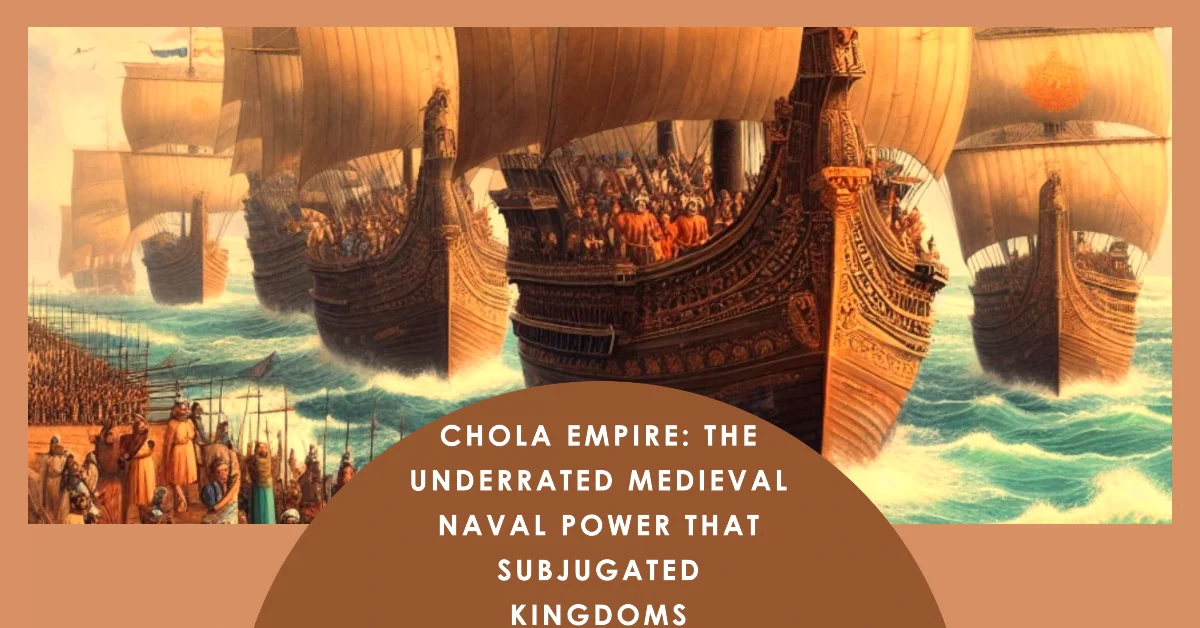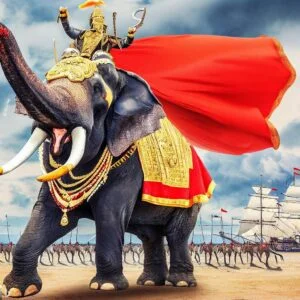Table of Contents
Introduction – The Rise of the Chola Naval Empire
The Chola Empire conjures images of towering temples and bronze sculptures, but few realize the instrumental role its navy played in making it one of India’s most formidable medieval kingdoms. This powerful seafaring empire emerged in southern India during the 9th century CE, dominating maritime trade networks from the Red Sea to the South China Sea for over 400 years.
Examining an expansive map showing the reach of the Chola Empire at its peak is an awe-inspiring sight. Its domains stretched from Sumatra and the Malay Peninsula in the east to the Maldives and Sri Lanka off India’s southern tip, a testament to the naval prowess underpinning this empire. The Cholas pioneered naval warfare in India, mastering the monsoon winds to sail between ports hundreds of miles apart with ease. Their sleek, nimble ships, built from tropical hardwoods like rosewood and jackfruit, could also double as war vessels when needed.
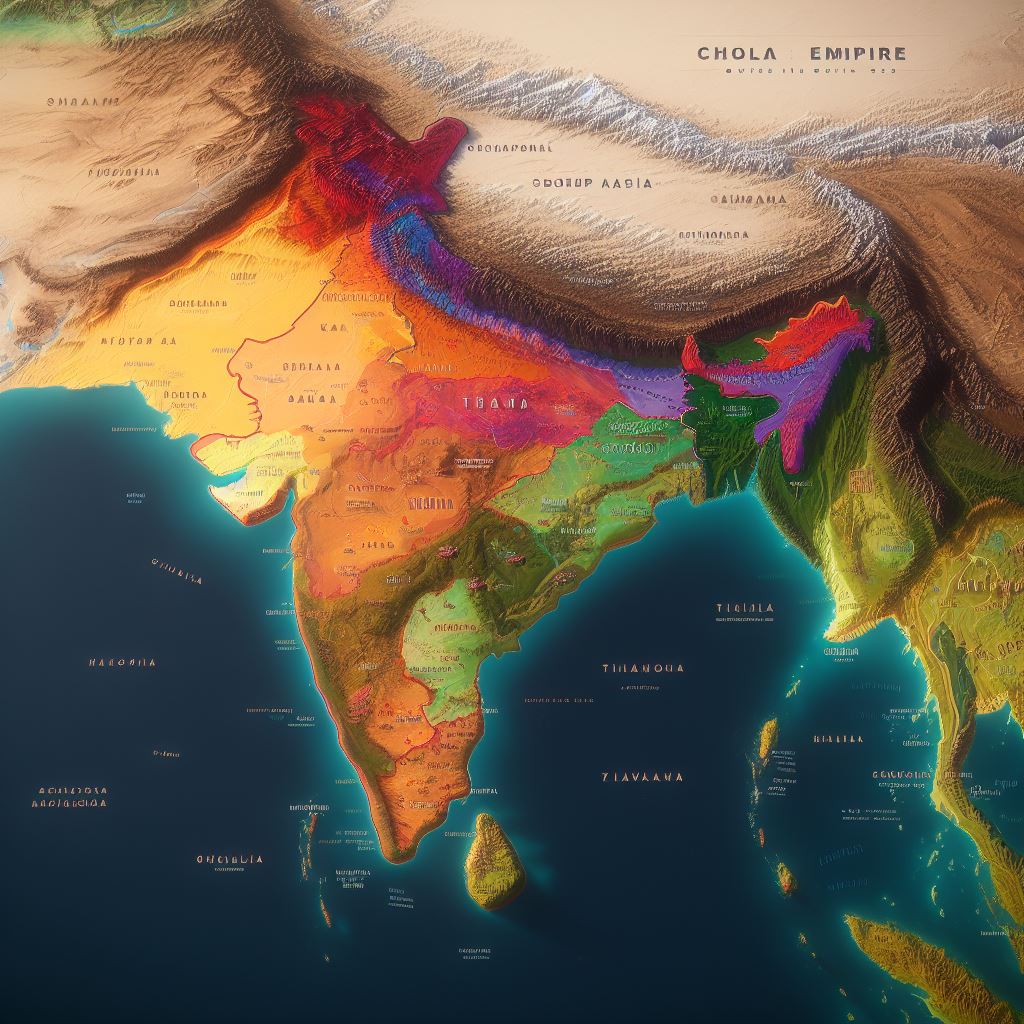
But the Cholas’ naval achievements weren’t limited to military feats. Their mastery over the seas powered an extensive maritime trading network that funnelled lucrative spices, textiles, ivory and more from around the Indian Ocean world back to the Chola heartland. The Chola kings invested these profits into magnificent temples and irrigation systems, laying the foundations for an artistic, economic and cultural golden age.
This sets the stage for the Chola Empire’s extraordinary tale – a regional power that evolved into a pan-Asian naval giant, its cultural and political influence rippling from Tamil Nadu to Indonesia.
The Chola Playbook: Ingenious Naval Strategy and Technology
The Chola Empire didn’t become a naval superpower overnight. Developing the maritime technology, trade connections and military strategy required to project power across thousands of miles of ocean was no easy feat in medieval times. So how did the Cholas manage to conquer coastal kingdoms across monsoon-lashed seas?
The secret lies in the innovative naval strategy and adaptations made by the Chola rulers. As their homeland sat upon a long coastline brimming with ports, maritime trade came naturally to them. The Cholas invested heavily in shipbuilding, constructing versatile wooden vessels capable of undertaking long journeys. They mastered celestial navigation techniques using the stars, supplemented by clever tricks like releasing homing birds to detect nearby land.
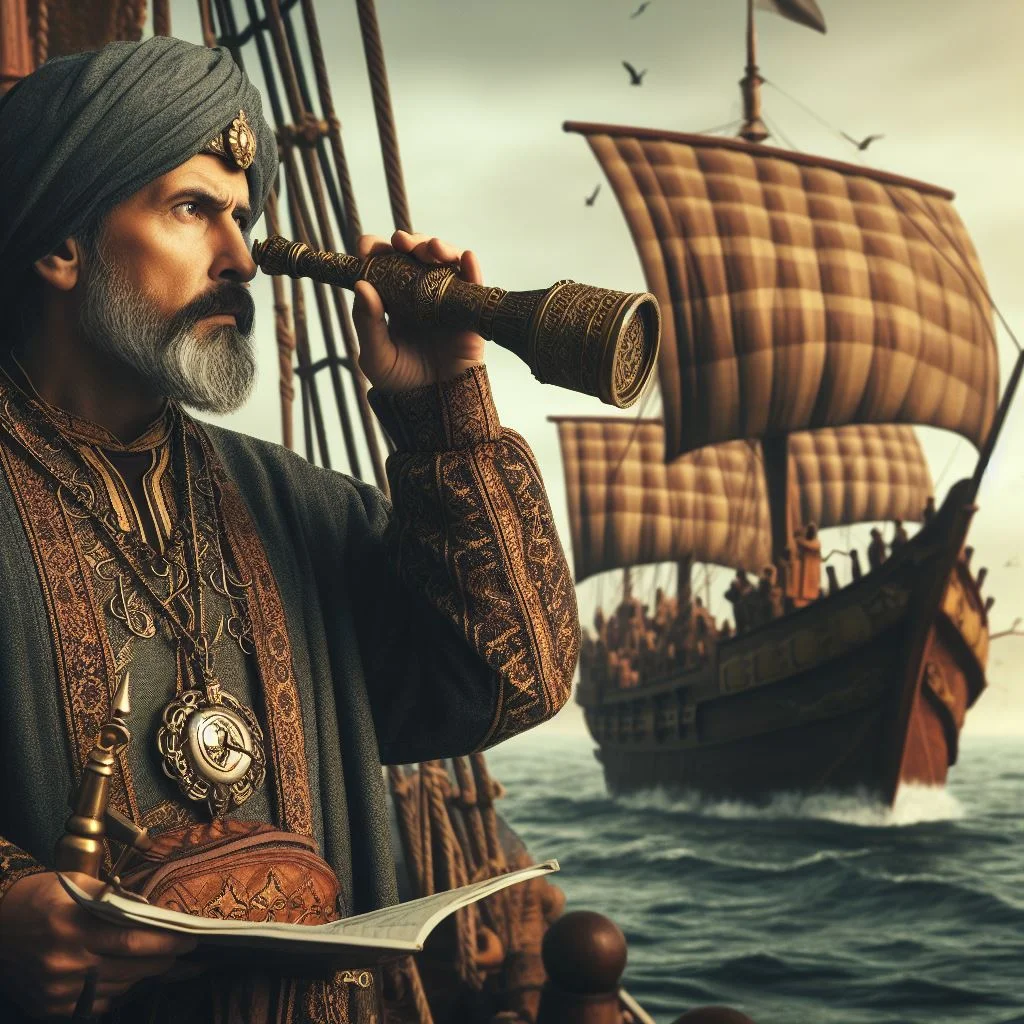
Chola ships brimmed with provisions for extended voyages like dried fish, rice and meat. Besides transporting spices and goods, these ships also had a dual purpose as supply lines for Chola infantry, cavalry and elephants when invading enemy ports. Unlike European naval vessels or Chinese treasure junks, Chola ships weren’t built for artillery warfare, relying on amphibious assaults.
These naval innovations allowed the Cholas to perfect supply chains and navigation across the Bay of Bengal, making short work of the rich Indonesian archipelago. The Chola playbook combined ruthless military strategy with technological adaptations that leveraged their maritime edge over land-based kingdoms.
This rare mastery over monsoon wind patterns and naval warfare catapulted the Cholas from South India’s Coromandel Coast to the shores of Sumatra and beyond.
The Chola Empire’s Spectacular Naval Conquests
The Chola Empire’s formidable warships and naval strategy were put to the test spectacularly by Rajendra Chola I in 1025 CE against the mighty Srivijaya Empire based in Sumatra. The Srivijaya king had directly challenged the Cholas’ control over the vital Southeast Asia to China maritime trade route, threatening the lifeblood of their economy. Rajendra Chola saw the need to deliver a crushing blow in response.
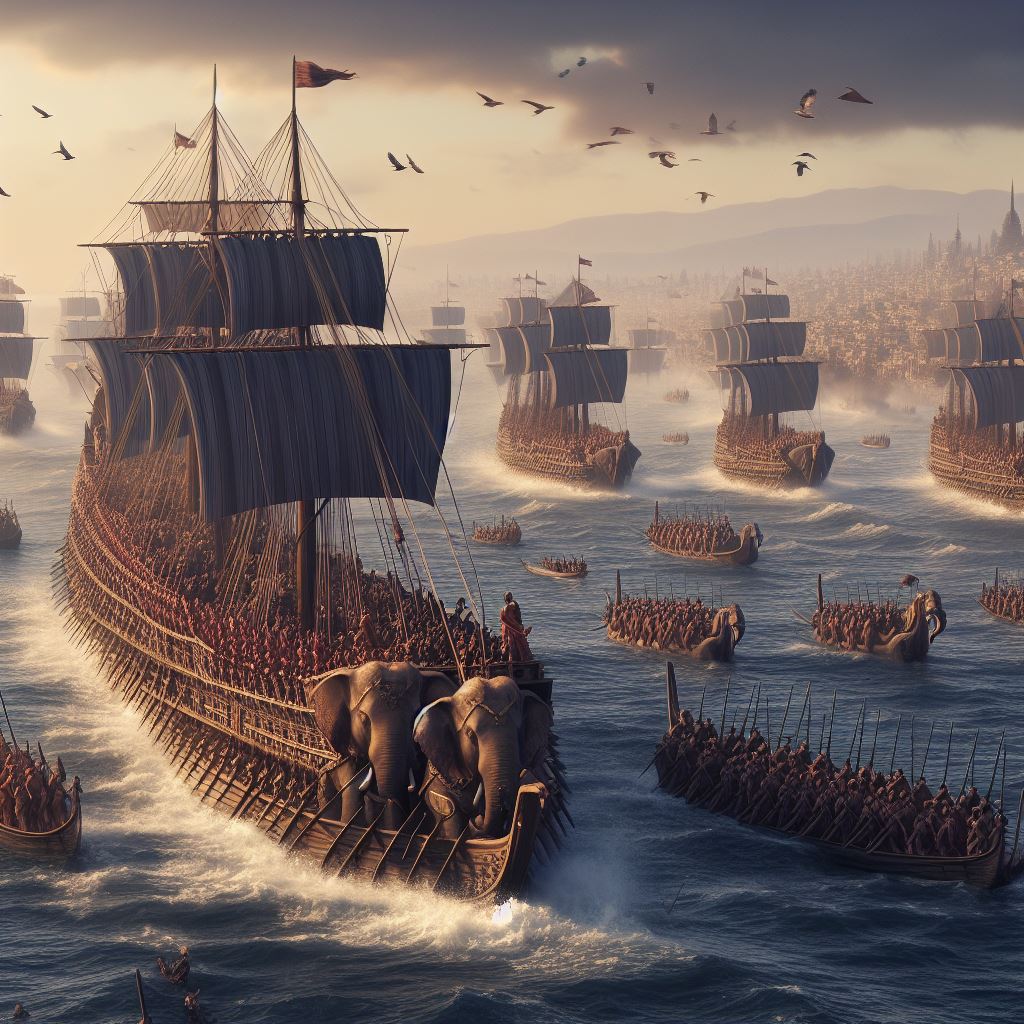
In an impressive logistical feat, Rajendra marshalled over 150 vessels to carry thousands of Chola warriors complete with infantry, cavalry and battle elephants across the Bay of Bengal to Srivijaya’s capital. The 3,000 km journey from the Chola capital Thanjavur to Kadaram in Malaysia took nearly a month, but catching the kingdom off guard in the monsoon season gave them the edge.
The Chola invasion fleet ravaged Kadaram and Palembang, sacking the grand Srivijayan capital, plundering its treasures and capturing its prized war elephant regiment. The Srivijaya rulers were taken completely by surprise by the audacity of Rajendra’s gambit, unable to match the Chola’s naval strength. Rajendra humbled the would-be challenger to Chola supremacy in the region, opening the floodgates to greater Chola maritime trade and political influence across Southeast Asia.

With this stunning attack, the Cholas announced themselves as the uncontested naval power in Asia during the 11th century CE. The celebrated Chola conquest broke Srivijaya’s economic stranglehold and political monopoly. Rajendra’s triumph against the odds serves as a resounding endorsement of the Chola Empire’s formidable maritime capabilities. Their ingenuity and broad mastery of naval strategy, shipbuilding and navigational techniques propelled Chola glory across distant horizons.
The Legacy of the Cholas’ Naval Dominance
At its peak in the 11th century CE, the Chola Empire projected power across the seas from Indonesia to the Maldives, their formidable navy and maritime exploits leaving a lasting impact on Asian history. Chola conquests opened up new trade networks between South and Southeast Asia, as goods, ideas and culture flowed between Tamil Nadu and fledgling kingdoms in Indonesia and Malaysia.
The most enduring legacy is visible through the spread of Hindu and Buddhist architectural and artistic influences blended with local traditions across these regions. Chola rulers supported temples not just around their homeland but also sponsored monumental complexes as far as Nagapattinam and Songkhla. These channels also exported Dravidian languages, literature, music and the Chola administrative model.

But the Chola Empire’s dominance soon waned after the 12th century CE, as a resurgent Sri Lanka, Hoysala and Pandyan dynasties chipped away at its trade monopoly and political authority. Chola rulers proved unable to balance external naval conquests while quelling endless internecine wars from ambitious feudatories.
Yet the Cholas’ pioneering naval strategy and technology served as an inspiration for succeeding regional powers like the Vijayanagar. The Chola playbook of leveraging maritime strength formed the bedrock for Indian Ocean trade, its ripples steering India’s engagement with Southeast Asia for centuries. Their ambitious naval doctrine and formidable warships laid the seeds for future Indian maritime ambitions.

So while standalone monuments crumbled, the lessons gleaned from the Cholas’ maritime adventures burned bright. Their naval innovations pioneering Asian military strategy resonate to this day as modern India reimagines its relationship with the seas.
Conclusion – Reviving India’s Forgotten Naval Heritage
The exploits of the Chola navy and the spectacular naval campaign against the Srivijaya Empire are relegated to a few paragraphs in Indian history books. This is unfortunate, as the ingenuity and ambition that drove the Cholas to project power across thousands of miles of the ocean set a high watermark in Asian naval strategy.
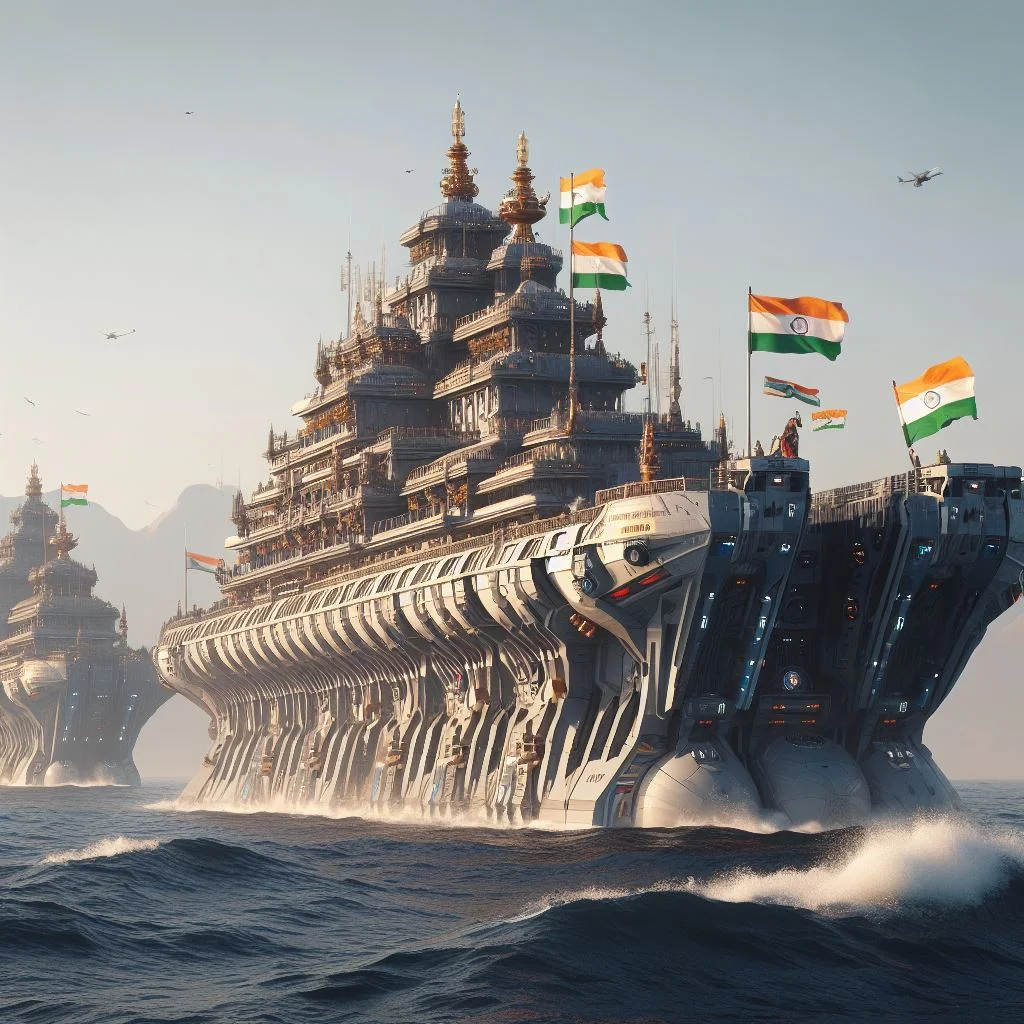
As contemporary India charts its naval doctrine to protect regional interests and safeguard critical seaborne trade, there are enduring lessons to be drawn from the Chola maritime playbook. Their nimble communication lines, shipbuilding innovations, and supply chains overcame the tyranny of distance in the Indian Ocean region. Importantly, the Cholas recognized naval power as a key asset that could be leveraged to pursue national interests and secure economic advantages.
Reclaiming this lost aspect of India’s maritime history can infuse naval strategy with much-needed dynamism. The Chola Empire’s territorial expansion was built on the twin pillars of maritime trade and naval dominance rather than inward-looking land wars. Embracing naval power as a diplomatic and economic tool for furthering national interests echoes the priorities of 21st-century India.
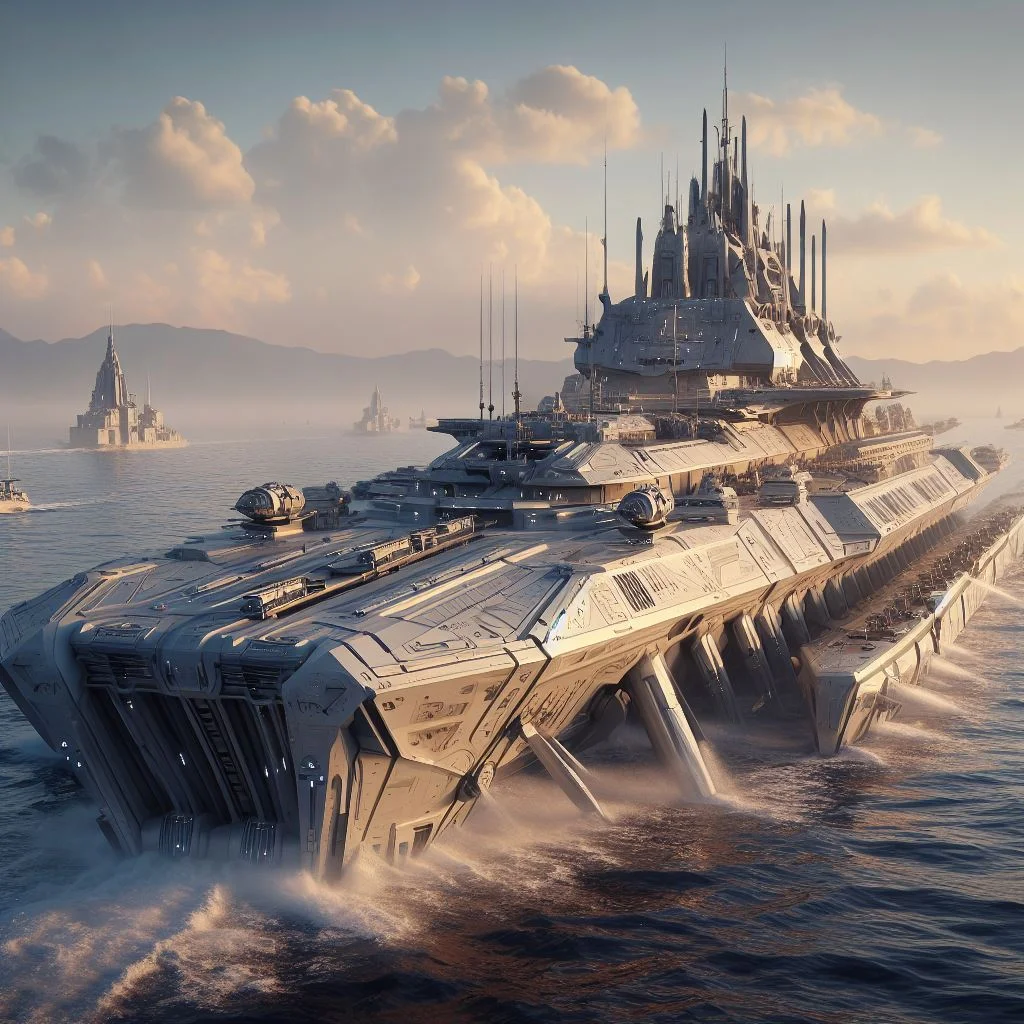
The accomplishments of Rajendra Chola and his formidable warships deserve as much recognition in popular discourse as the towering Brihadeeswara Temple. As we usher in a new chapter focused on expanding engagement with Southeast Asia, the legacy of an Indian naval kingdom humbling a regional superpower in its backyard serves up some inspiration. By reviving the exploits of the Cholas nearly a millennium ago, we can resuscitate ancient principles that catalyzed power projection across the high seas into modern times.
Key Points For Quick Overview Of Chola Empire
- Chola Empire emerged in southern India during the 9th century, growing into a formidable naval power
- Pioneered shipbuilding and navigation techniques for Indian Ocean trade dominance
- Flexible navy with strong capabilities in amphibious and supply line warfare
- Spectacular conquests under Rajendra Chola against Srivijaya Empire in 1025CE
- Projected political authority and spread culture across Southeast Asia
- Legacy as inspiration for using naval power to pursue national interests
FAQS
Q: When did the Chola Empire rule in India?
A: The Chola Empire rose to power in southern India during the 9th century CE and dominated the region for over 400 years.
Q: How big was the Chola navy?
A: At its peak during Rajendra Chola’s rule, the Chola navy consisted of over 150 ships and could transport thousands of troops for its campaign against the Srivijaya Empire.
Q: What areas did the Chola Empire control?
A: The Chola Empire controlled what is now southern India and parts of Sri Lanka. It also conquered parts of Southeast Asia including Malaysia, Indonesia and Sumatra.
Q: What made the Chola Empire navy powerful?
A: The Chola’s navy strength stemmed from strong capabilities in shipbuilding, navigation, amphibious and supply line warfare that were innovative for medieval times.
Q: Who was the most important Chola ruler?
A: Rajendra Chola I was the most renowned ruler whose naval campaigns expanded the Chola Empire’s power and cultural influence across Southeast Asia.
Q: How did Chola ships navigate?
A: Chola ships used the stars, aligned with constellations, released homing birds to detect land, and leveraged knowledge of monsoon wind patterns to navigate.
Q: What was important about the Chola invasion of Srivijaya?
A: The Chola conquest of the Srivijaya empire in 1025 CE broke its monopoly over the lucrative China-Southeast Asia maritime trade route.
Q: What did the Chola Empire trade?
A: The Chola Empire traded spices, textiles, ivory, cotton, silk, precious stones and other goods across maritime routes in Southeast Asia.
Q: Why did the Chola Empire decline?
A: Chola power eventually declined due to internal rebellions and resurgent threats from the Pandyas, Sinhalas of Sri Lanka and Hoysala kingdoms.
Q: What was the legacy of the Chola naval power?
A: The Cholas pioneered naval warfare concepts in medieval Asia and showed how control overseas could project political power.
Uncover the tales of conquest and military brilliance that forged an empire. Journey to a bygone era at “The Military Prowess of the Chola Dynasty: Conquests and Expansion in Ancient India.”

